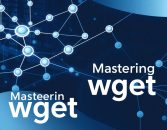Understanding the Digital Gold Rush: Web Scraping Amazon‘s Ecosystem
Imagine standing at the precipice of a digital gold mine, where every piece of data represents potential strategic advantage. Amazon, the world‘s largest e-commerce platform, isn‘t just a marketplace—it‘s a complex, dynamic ecosystem teeming with invaluable information waiting to be extracted. Web scraping has transformed from a niche technical skill to a critical business intelligence strategy, and understanding its nuances can mean the difference between competitive insight and missed opportunities.
The Evolution of Data Extraction
Web scraping emerged from the early days of internet exploration, where curious technologists discovered methods to systematically collect and analyze online information. What began as rudimentary screen-scraping techniques has now evolved into sophisticated, machine-learning-powered extraction methodologies that can navigate complex digital landscapes with remarkable precision.
Technical Foundations: Building Your Scraping Infrastructure
When approaching Amazon‘s data extraction landscape, you‘ll need more than just basic programming skills. Successful scraping requires a multifaceted approach that combines technical prowess, strategic thinking, and an understanding of complex network interactions.
Network Architecture and Proxy Management
At the heart of effective web scraping lies a robust proxy infrastructure. Think of proxies as your digital disguise—they allow you to navigate Amazon‘s servers without triggering anti-scraping mechanisms. Modern proxy networks aren‘t just about changing IP addresses; they‘re sophisticated systems that mimic human browsing behavior.
A professional-grade proxy setup involves:
- Residential proxy networks that use real, geographically distributed IP addresses
- Rotating IP strategies that dynamically change connection points
- Sophisticated request timing and header management
The Proxy Rotation Mechanism
[Proxy_Rotation_Score = \frac{(Unique_IPs * Geographical_Diversity)}{Request_Frequency}]This formula represents the complexity of creating an undetectable scraping environment. The higher the score, the more sophisticated and less likely your scraping attempts are to be blocked.
Authentication and Stealth Techniques
Modern websites like Amazon employ advanced machine learning algorithms to detect and block scraping attempts. Your extraction strategy must be equally sophisticated. This means:
- Implementing intelligent user-agent rotation
- Mimicking realistic browser fingerprints
- Managing cookies and session data dynamically
- Introducing intentional human-like browsing delays
Legal and Ethical Considerations
Navigating the legal landscape of web scraping requires nuanced understanding. While data exists in the public domain, how you collect and use it matters significantly.
Regulatory Frameworks
Different jurisdictions treat web scraping with varying levels of complexity. In the United States, the legal precedent is still evolving, with courts gradually establishing guidelines around data extraction. Key considerations include:
- Terms of Service compliance
- Intellectual property rights
- Data privacy regulations
- Commercial use restrictions
Advanced Extraction Techniques
Machine Learning Enhanced Scraping
The next frontier of web scraping involves integrating machine learning models that can:
- Dynamically adapt to changing website structures
- Predict and circumvent anti-scraping mechanisms
- Automatically optimize extraction parameters
class AdvancedAmazonScraper:
def __init__(self, proxy_manager, ml_model):
self.proxy_manager = proxy_manager
self.ml_model = ml_model
def extract_product_data(self, url):
# Intelligent extraction logic
passPerformance Optimization Strategies
Effective scraping isn‘t just about collecting data—it‘s about doing so efficiently and at scale. This requires:
- Asynchronous request handling
- Distributed computing architectures
- Intelligent caching mechanisms
- Error recovery and retry strategies
Concurrency and Scalability
Modern scraping frameworks leverage asynchronous programming models that can handle thousands of requests simultaneously without overwhelming target servers.
Market Insights and Economic Implications
Web scraping has transformed from a technical curiosity to a multi-billion dollar industry. By 2027, the global web scraping market is projected to exceed \$22.5 billion, reflecting its critical role in modern business intelligence.
Industry Applications
- E-commerce competitive analysis
- Price monitoring
- Product trend identification
- Consumer sentiment research
- Market expansion strategies
Future Technological Landscape
As artificial intelligence and machine learning continue to evolve, web scraping will become increasingly sophisticated. We‘re moving towards an era of intelligent, adaptive data extraction systems that can navigate complex digital environments with unprecedented precision.
Conclusion: Embracing the Data-Driven Future
Web scraping represents more than a technical skill—it‘s a strategic capability that can unlock profound business insights. By understanding the intricate dance between technology, legal frameworks, and ethical considerations, you can transform raw data into actionable intelligence.
Remember, in the world of digital information, knowledge isn‘t just power—it‘s a competitive advantage waiting to be discovered.






